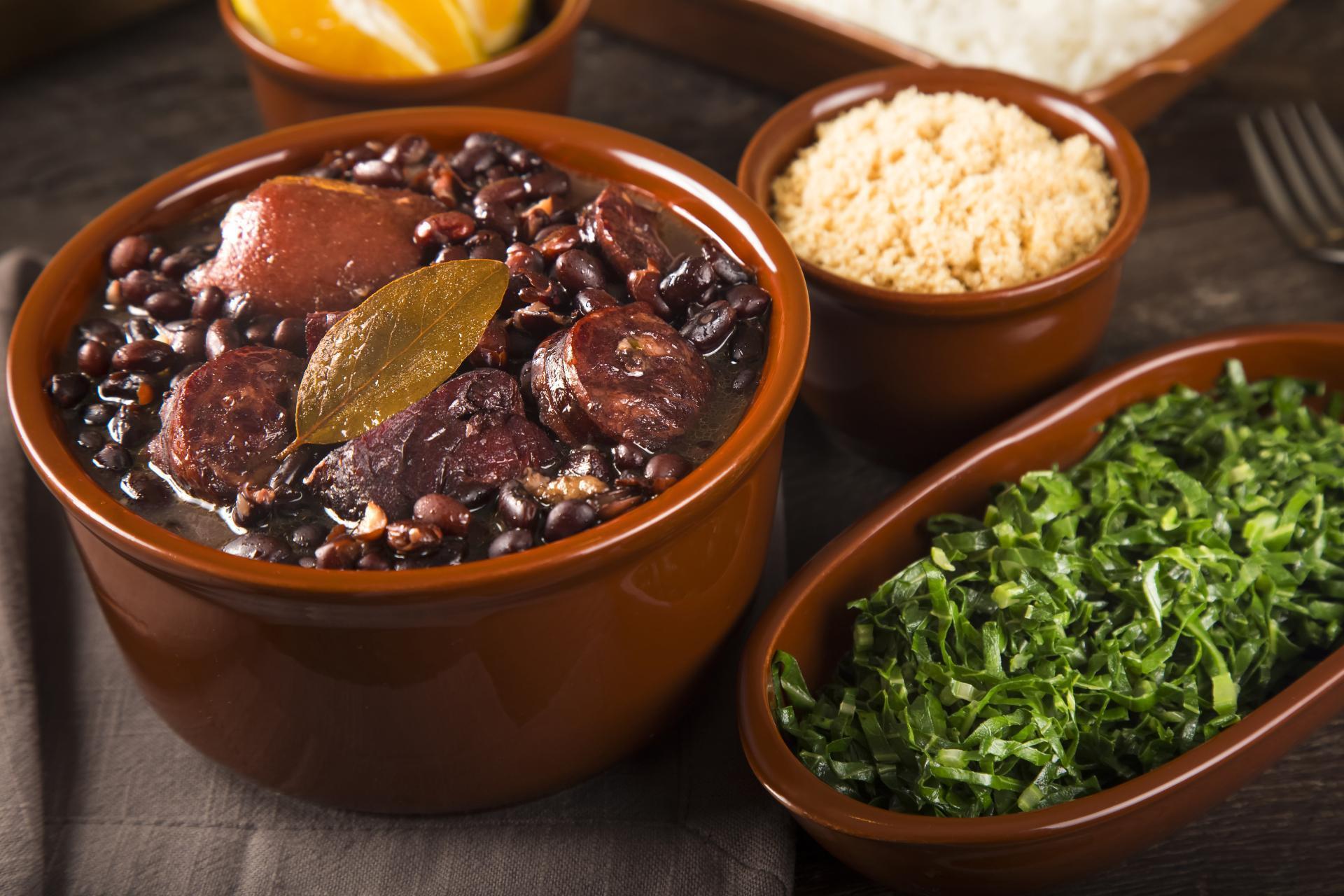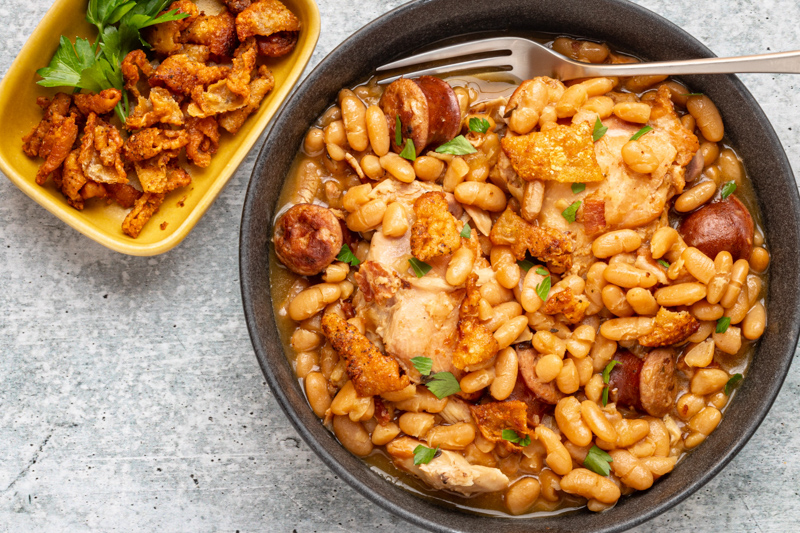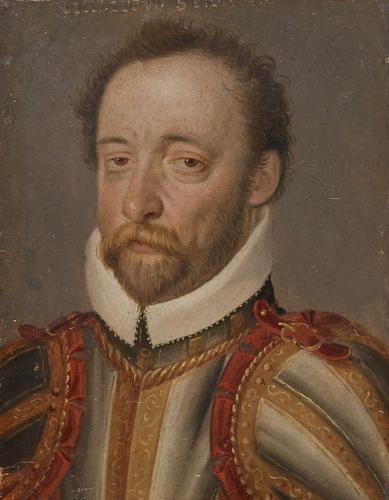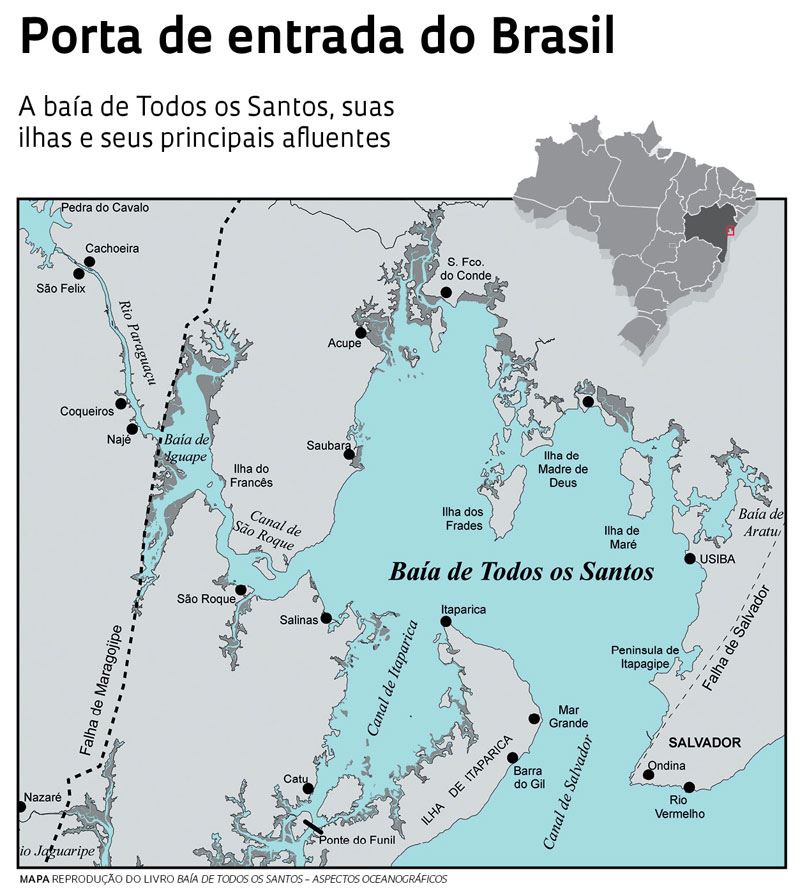With the arrival of the letter in Henry II's hands, he immediately recognized the value of the words of Villegagnon, an attack towards Salvador would essentially secure the most important and well built parts of Brazil and more importantly, could be used as a jumping board to get in contact with the Tupinambás and Potiguaras[1] in the north and much like what happened in Henriville, use their friendship to secure the countryside and allow for French control of the coast and more importantly, the sugar producing city of Olinda in the state of Pernambuco[2] something that had been giving both the Portuguese and Dutch quite the profit given one free the cane and the other refined it, the French wanted to break the cycle by both being the producers and the refiners not to mention financing it themselves given it was an expensive venture, something that would secure the important parts of the colony and leave the Portuguese with only São Vicente as a friendly port, essentially bottling them up.

Monsieur Gaspard himself, decent facial hair but great commander and administrator.
To this task, Henry turned to one of his most loyal and more competent men in the army and navy: Gaspard II de Coligny. Already an experienced veteran from campaigns in Italy from the time of Francis I where he had even been knighted due to his service, under Henry's own regime the nobleman had made up reforms in the military, with his regulations for keeping the infantry disciplined being sanctioned by the king, he had also distinguished himself as an administrator as governor of Paris, a much coveted post as well as his campaigns in the Low Countries where alongside Francis Duke of Guise, both managing the win at the battle of Renty where the duke was nearly killed due to stray shrapnel and Gaspard who would've normally received all the glories for the victory actually stood up for his injured friend and asked he received the same recognition, an act of kindness the Duke would not forget [3], all the while he had also gained the governorship of the very important border region of Picardy and more importantly, the routing of the Spanish army in Saint-Quetin [4] that saw the city saved and further weakening the Spanish army that was already dealing with the Dutch revolting against their rule. If there was anyone who could lead a successful invasion it was him.
For the task, an impressive fleet of over 50 ships as well as 5000 men would be put into Coligny's direct command for the proposed assault in the capital, Coligny would also take with him Filippo Strozzi [5], another experienced commander who also had knowledge about Brazil (especially the northeast parts), Henry promised Coligny that if he managed to successfully pull it off he would be made governor general of Brazil with absolute control of the colony to develop it as he saw it fit, something the general was more than happy to receive. After a celebratory joust [6] to the end of the war in 1559 between France and Spain, Coligny took some of his veteran men alongside Strozzi for the assault.
Strozzi, don't let the face of someone who spends their late nights looking at a screen fool you, he was quite the commander and as shown, had a decent facial hair and had pretty armor so he was essentially a honorary Frenchman.
Of course the Portuguese weren't idle waiting for the French to simply come and take their colony, they had little time to prepare as when the one survivor ship landed in Salvador the French ship was already at full speed to inform Henry and the defenders had to do with what they had in Salvador and wait for reinforcements, unfortunately the city was badly defended and understaffed with soldiers as well as cannons [7] meaning that the already vulnerable capital was even more ripe for the taking but fortunately for the defenders they had a good man for the job: Estácio de Sá [8], the nephew of the deceased General Governor was a decent enough commander who managed to scoure(read: took it from other Capitanies like Ilhéus and Porto Seguro, something that definitely didn't leave them happy) cannons and put them in high points, he also had civilians and native allies work day and night to try and repair most of the walls and fortress as well as drilling the soldiers daily alongside managing a few militia man from both within and outside the city, he knew he was outgunned and outmanned but hoped it would be enough to bludge the Frankish invaders.
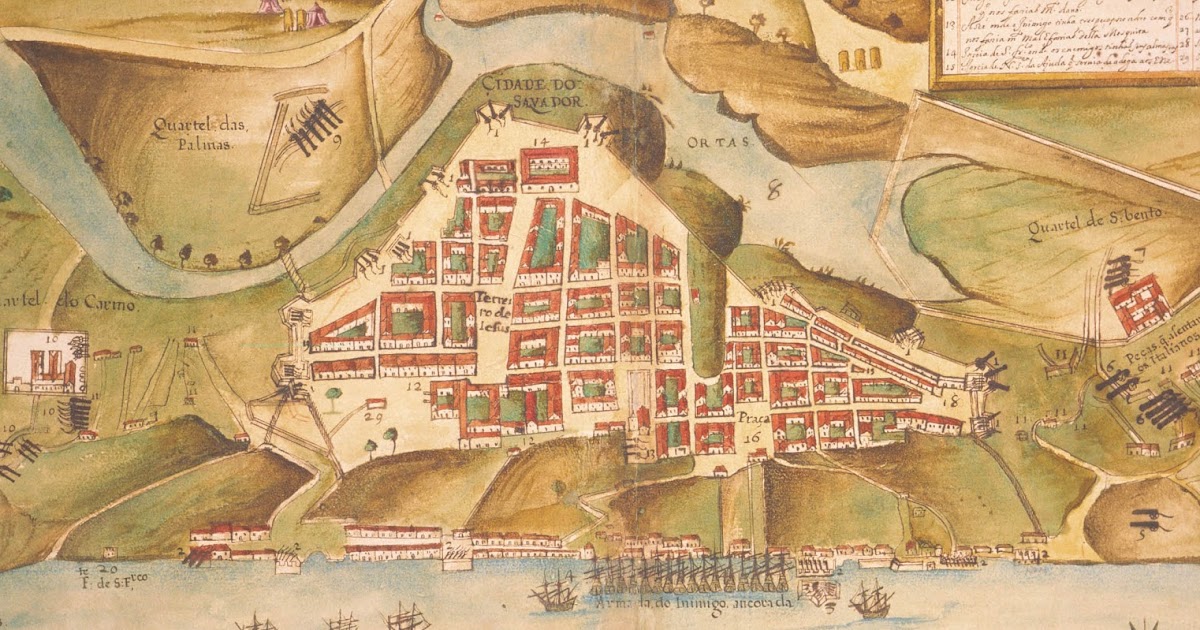
The city of Salvador in the 16th century, one of the few cities actually worth of being the capital of Portuguese America.
In the late of 1559, the French fleet had been spotted in a misty morning and the defenders rushed into their positions as the few ships in the Bay de Todos os Santos and hoped for a ambush which thanks to the location of the batteries as well as the fact that the main entrance was just wide enough allowed for the Luso defenders to rain hell on the attackers, the hidden ships in the mist were also a constant source of tension for the French as even if they managed to escape both the reinforced forts began firing once in range, despite the relative undefended nature of the city, the defenders were more determined than ever to not make it fall.
Coligny would not be dissuaded however, he slowly "introduced" the ships through the entry of the bay and cornered the no longer hidden ships, smashing them in and leaving the sea fully French and allowing for a line of ships to bombard the fortresses and walls to hell and back while the hidden cannons could only do so much, especially now that actual French troops were landing in the city and starting their assault, using their bigger numbers in order to cover ground and sweep away the spread Portuguese troops, Estácio tried to rally the troops but he would be captured in the chaos while the very few troops that hadn't died or surrendered fled into the jungle to join with native allies and start a guerrilla campaign. For all intents and purposes, the capital had fallen.
View of the Bay de Todos os Santos, the gateway and perfect harbor for Salvador and also ideal for defense.
For Coligny, this was just the beginning of the troubles as he used his soldiers to rebuild the fortress and expand them, Estácio's idea of manning guns in strategic points at the entry of the bay was also reinforced and expanded, the more injured men and battered ships would stay in region for healing while Strozzi would take 10 ships and 1000 men for the assault. The small fleet arrived at Olinda in early 1560 and quickly took the city alongside the help of the local natives, specifically the Potiguaras who had been contacted beforehand and were already harassing the city defenders to slowly grind them down. Olinda had grown fat from decades of being the center of sugar production in the colony, crates full of sugar, cotton and other raw materials were sent to Salvador where part of the fleet left to get reinforcements as well as to deliver the booty.
Strozzi however found the ease that he took Olinda too easy even with his advantages, he took scouting of the land and eventually settled on a place (OTL Recife) and decided to built a fort there, looting and dismantling the remains of the forts and cannons from Olinda alongside it's gunpowder. Fort Charlotte would be completed soon enough and was supplied both with looted food from Olinda as well as those supplied by their native allies, protected by the swamp-like region, Strozzi waited for orders.
This string of defeats was both surprising and not surprising for Portugal, sure it was expected that because of their focus on India and Asia they wouldn't be able to give as much resources to defending America outside of the minimum requirements but it was still expected that they could hold out for a bit longer, the fact that outside of São Vicente all their major cities had fallen was alarming to say the least and there was serious discussion about cutting their losses and negotiating the "buying" of the colony in a way they could still save face and avoid further losses.
This however was shut down by the regent Catherine of Austria who knew the value of sugar for the economy not to mention the fact the African colonies would be impacted negatively by the loss of them selling slaves to the plantations, therefore they needed to do all they could at expelling the French, the question was where to strike: Henriville was tempting given it's weakness but was scrapped due to it seeing lacking in relevance, Salvador was another great target given that the plantations in it, Ilhéus and Porto Seguro were still making sugar not to mention that it was the capital but the bulk of the French fleet was there alongside hardened veterans from the latest war and led by a competent commander in Coligny, all it would take was one defeat to solidify French control who the Portuguese knew was being reinforced stronger than ever in order to stave off any potential counterattacks.
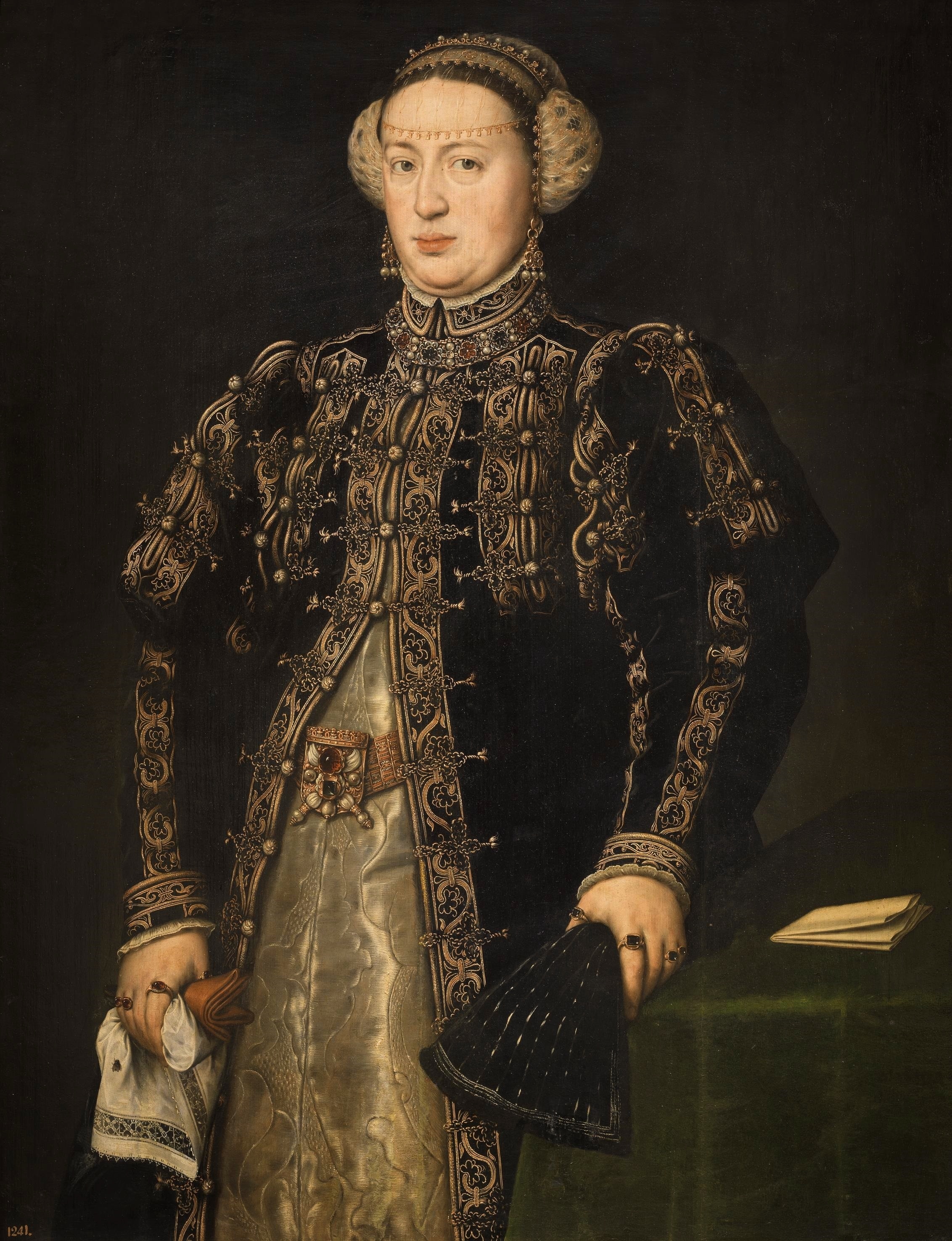
The Queen regent of Portugal and former Infanta of Spain Catherine Habsburg/Aviz. You can tell she's a Hapsburg given that their lips and chins just had a thing for making most of them look evil, haughty or both, in this case it's definitely the former.
Finally, as the news of the fall of Olinda came that one was decided as the target, it was the largest producer of sugar in the region and occupying it again could make Coligny attempt to dislodge them out and make an assault on Salvador easier and if he didn't, it was another great springboard for the reconquest of Salvador and would make supply lines easier to manage, thus a fleet would be sent over in order to retake it and clear away any potential French troops, a convoy of 30 ships alongside 4000 men were dispatched, led by the admiral Lopo de Azevedo.
France herself wasn't idle either, they knew a Portuguese response would come soon and just as the boxes of looted sugar and goods from Olinda arrives, Henry already has another fleet of 20 ships and 3000 men on their way towards Salvador to meet up with Coligny and prepare for an assault on "whatever place the admiral deems it most necessary for success"
The Portuguese fleet initially landed in Olinda only to find a wrecked town: the harbor had been burned alongside it's facilities, all the gunpowder had been looted alongside food which left the population looking for scraps and rats to survive and even the quality materials from important government buildings had been taken apart, Olinda was essentially a husk of a city and a problem for the crew who had planned to use it for resupply or expected the French troops to be there, however one of the surviving soldiers explained to them the Frenchman were holed up farther north and were alongside their native allies and their ships, most likely trying to build a fort in better ground.
Azevedo quickly set off for Fort Charlotte, hoping to catch the French off guard and crushing them in one fell swoop. Initially the battle went well for the Portuguese, while their sailors were tired from the trip and unable to resupply, they fought well given their admiral had reassured them that winning this battle would see them "return to Portugal as heroes and get their due rewards" so they could afford this last hurrah of energy and while the French troops were well rested and had been readying themselves for battle, the simple fact was that they were outnumbered and were less experienced than their Luso counterparts, so with a mixture of past combat experience and superior numbers, the Portuguese fleet soon had sunken over half of the French convoy and were in the process of capturing the other four while the fort of Charlotte was under heavy bombardment, the Portuguese admiral was determined to make an breach already so he could land in there and scatter the French, he was close to the tasting it even with the fort firing back with seemingly endless amount of artillery that had already damaged and even sunken a few of his ships.
The Portuguese assault against Fort Charlotte, despite the heavy damage against the defending French, the Assault would be unable to dislodge them.
His sense of triumph turned into horror when he saw black shapes emerging from the horizon, he knew they weren’t Portuguese given the fact the Kingdom was already overextended and wouldn’t be able to send more ships in such a short time window when he saw their flags through the spyglass he saw the flying fleur-de-lys in the mast and immediately recognized that if he did not withdraw he would essentially be losing the battle, the defenders meanwhile were reinvigorated by the drawing fleet and fought ever harder and the already tired Luso sailors had their morale shattered as the renewed Frenchmen fought off the boarding parties and despite being battered were returning fire alongside the fortress using all its remaining cannons and gunpowder in order to cripple the Portuguese fleet as much as they could. But the fact was that the battle hadn’t gone in a way either power expected, the Portuguese had lost over half the fleet especially because their most damaged ships had been slowed down and either captured or sunk, while the French in fort Charlotte had received the beating of a lifetime as well as having their small convoy all but wrecked save two or three ships, they did manage to repeal the attackers and hold unto conquered land, the relief fleet was resupplied by the still ample food Strozzi had stored and was rewarded with much needed gunpowder while his troops rebuilt the fort and what remained of his fleet went with the relief force back towards Salvador for their final target: the village of São Vicente.
Coligny was not exactly thrilled about the possibility of assaulting the place, he wanted to safeguard and defend their conquests in the valuable Northeast instead of “chasing half indian soldiers in wheat fields and monasteries” but after a few hours of thinking, he acquiesced and lent 10 of his own ships to accompany the final assault troops, they made a stop in Fort Coligny to gather more troops as well as coordinate with the Tamoios who had invaded not too long ago[9] and the barely defended colony had suffered heavy damages from the native raids according to their scouts, the fleet quickly set upon São Vicente ready to finish this once and for all.
Map of Sao Vincente. They did not have colored maps like these back in the 16th century but I thought it looked good so I'm using it
However when they arrived in the village, they were greeted by Martim Afonso de Sousa waving a white flag, the fact was that the Tamoios had really damaged the village to the point where hoping to resist against the French was foolish, De Sousa only asked that his men be granted safe passage back to Portugal and that whatever was left of the village not be looted, something the French eagerly accepted and as the governor left, the Portuguese cross was tore down and replaced by the French Fleur-de-Lys. For all intents and purposes, Brazil was now French in hands.
Oof! Now that was a huge chapter right? But I’m glad I managed to do it in one sitting, here we basically see France taking over Brazil and Portugal being a prime example to why you better build up your colonies, at least in the self defense department. Next chapter will see us being taken to Europe where France and Portugal formalize a treaty about the change in ownership in Brazil, Spain watches this with weary eyes, England and Denmark sees an opportunity and Portugal rethinks their life choices. Any information or recommended readings about how these countries were functioning at time would be a great help, especially since Wikipedia only gives you so much.
[1]: The other two groups of natives the French were buddy buddy with and who helped them gather many Brazil Wood in the region and here are key for the French succeeding in attacking Olinda.
[2]:Outside of São Vicente, Olinda/Pernambuco had been the only one of the Capitanies to not only succeed but also give a lot of profit not only to the plantation masters but also to the Dutch, Flemish and Italian bankers who financed these ventures as well as in the case of the Dutch were the main sugar refiners in Europe and made more money than the Portuguese by exporting it to the rest of Europe.
[3]:In OTL, both had a falling out between who would get the glory of the victory that while their “official” reconciliation happened with Henry who didn’t want his best commanders at each other’s throats, the fact was that the incident essentially killed their friendship. Here with Guise injured and Coligny being more humble, not only is their friendship maintained here but made even stronger due to the admiral standing up for the duke, something that will have important effects later on when it comes to dealing with the “Protestant Question”
[4]:Another major deviation from OTL where he failed, was rebuked for his failure by the king and confined in a wet and miserable cell in Flanders where his brother sent him a Protestant text that given his situation was something that had saved him during his darkest time and explained why he was so pro active in securing bigger and bigger rights for Huguenots in France, here with him avoiding such a dark fate he remains a catholic albeit one who doesn’t share Henry II’s Exterminatus policies, again something that will have important effects with him as General Governor of I’Antarctique.
[5]: True from OTL, he had been an italian noble allied with France who fought with them in multiple occasions and had also explored Brazil and made contact with the natives in the northeast of the country, in OTL he died in a naval battle in the context of the Portuguese Succession War something he will avoid ITTL.
[6]: One of the most important PODs ITTL, Henry II doesn’t die from a jousting tournament and will keep the realm stable alongside the Valois remaining on the throne for the foreseeable future and like I mentioned, avoiding the French Wars of Religion. Great for France, horrible for everyone else not named France, especially Spain.
[7]: Very true as the governor Diogo de Mendonça Furtado described Salvador as “An rich treasure that was badly guarded” and that it was “an open city really and staffed only by 80 soldiers with low pay”, this was in the context of before the Dutch Invasions and where Portugal had supposedly actually improved the defenses of the colony, here it’s much worse, not only for the capital but also the rest of the major cities as Olinda found out in the hard way.
[8]: Mem’s nephew, OTL he was responsible for eventually driving out the French from the Henriville and founding Rio de Janeiro but here his situation is basically reversed as he’s stuck in a badly defended city against overwhelming odds and here is no anime for him to get a final power up to overcome his foes.
[9]: Something that happened in OTL too even with the French presence extinguished, here with Henriville thriving and alive as I imagine the Tamoio assault would be much worse especially if their Cabloco kin joins them in the assaults, the village wasn’t that very well defended so here it’s wrecked even harder than OTL and De Sousa realizes he can’t possibly resist the French in this state so he does the smart thing and surrenders.
